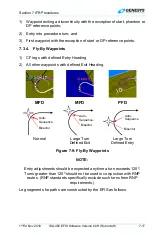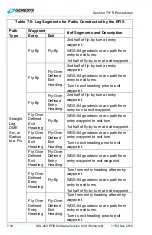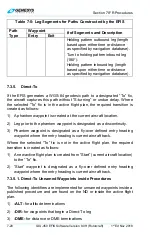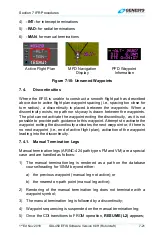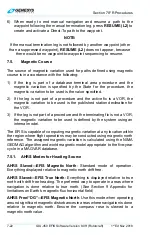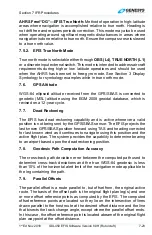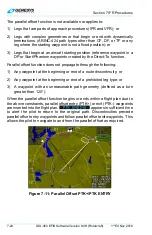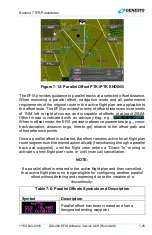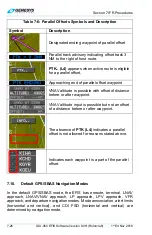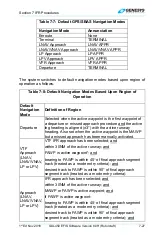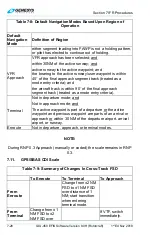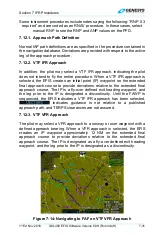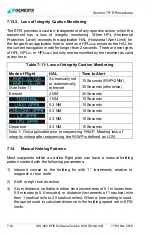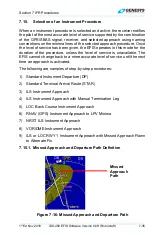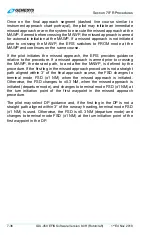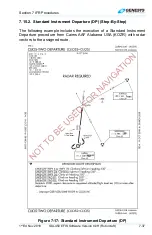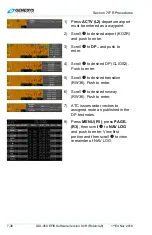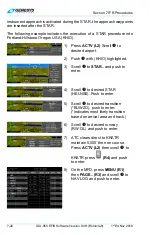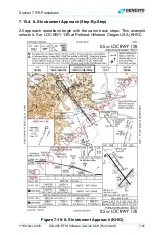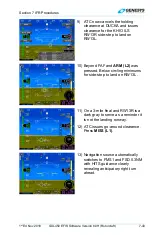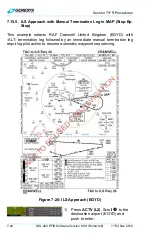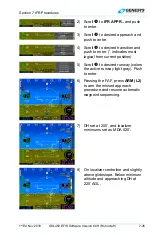
Section 7 IFR Procedures
7-30
IDU-450 EFIS Software Version 8.0H (Rotorcraft)
1
st
Ed Nov 2018
The EFIS selects the approach type (LNAV, LNAV/VNAV, LP, or LPV)
when entering approach mode with the following order of precedence and
prerequisites:
1)
LPV
:
a) ARINC-424 “Level of Service” indicates LPV minimums are
published;
b) Valid long-term, fast, and ionospheric SBAS corrections are
available and being applied to at least 4 GPS satellites;
c) Final approach segment data block exists and passes CRC; and
d) Horizontal and vertical alert limits from final approach segment
data block are predicted to be supported.
2)
LP
: (Same precedence and prerequisites as
LPV
(except ARINC-424
“Level of Service” indicates LP minimums are published.)
3)
LNAV/VNAV
:
a) ARINC-424 “Level of Service” indicates LNAV/VNAV minimums
are published;
b) If a final approach segment data block exists, it passes CRC; and
c) Horizontal alert limit of 556 m. (.3 NM) is predicted to be supported.
NOTE:
Because the EFIS inherently supports barometric VNAV, it is not a
prerequisite for the vertical alert limit to be predicted or supported, nor is it
a prerequisite for valid long-term, fast, and ionospheric SBAS corrections
to be available and applied to at least four GPS satellites. Rather, the
vertical alert limit (50m) and SBAS correction tests are used to determine
whether to present guidance based upon GPS altitude or barometric
altitude.
4)
LNAV
: Default approach type and is selected when none of the above
selections is made. There are no prerequisites for selecting LNAV.
The EFIS continuously displays the approach type (mode indication) after
selection. It does
not degrade the approach type after selection unless the
approach procedure is reselected or changed.
NOTE:
These GPS/SBAS modes still appear during a ground-based approach
such as an ILS approach.


